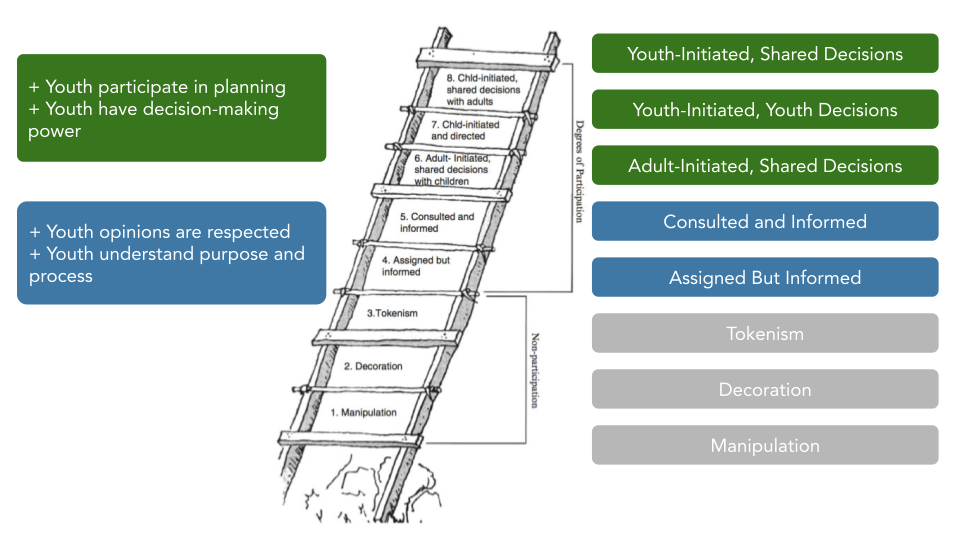Hart’s Ladder of Young People’s Participation
Hart's Ladder is a visual illustration of the importance and value of youth participation in prevention programs. The highest rung on the ladder involves youth initiated projects where youth and adult allies share equal levels of decision making.
This ladder challenges educators to move away from the lower rungs of non-participation (youth as decoration, tokenizing youth, or assigning/informing youth) to the higher rungs in which young people are genuinely engaged as partners.
Meaningful youth engagement is vital in creating safe, supportive, and healthy school environments that lead to better peer to peer connections, student to adult relationships, and overall school connectedness.

